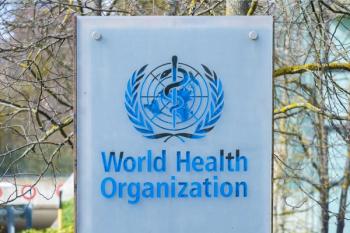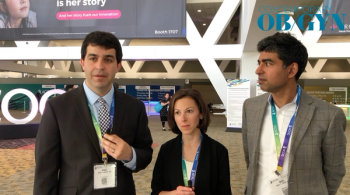
As awareness spreads on the adverse impact caused by postpartum hemorrhage, investigators are working to streamline management.


As awareness spreads on the adverse impact caused by postpartum hemorrhage, investigators are working to streamline management.

Updates in management

In a recent study, increased rates of severe maternal morbidity were observed among hospitals with a lower obstetric volume in rural settings, but not urban settings.

The American Indian and Alaska Native population show the largest increase in median state ratios, rising from 14 - 49.2, while the Black population consistently had the highest median state ratios, increasing from 26.7 - 55.4.

Hugh Taylor, MD, discusses topic which will be presented at the 4th Annual International Congress on the Future of Women’s Health.

In a recent review, the associations between components of lifestyle interventions and reductions in gestational weight gain were unclear.

In a recent study, rates of maternal morbidity increased in 2021 compared to 2008, while in-hospital mortality rates were reduced.

In a recent study, positive safety and efficacy were found in patients taking mifepristone against adenomyosis.

In a recent study, pregnant individuals residing in neighborhoods with greater densities of unhealthy food were at an increased risk of giving birth to infants who were small for gestational age or large for gestational age.

Emre Seli, MD, chief scientific officer of the March of Dimes, discusses the organization's initiative to research recurrent pregnancy loss.

Technology may be used in ultrasounds, fetal heart rate interpretation, and prediction of adverse clinical outcomes.

In this video interview, experts provide a synopsis of their presentation about technology and obstetric care at the 2023 ACOG Annual Clinical and Scientific Meeting.

At the 2023 ACOG Annual Clinical and Scientific Meeting, Haywood Brown, MD, discusses the current maternal mortality rate in the United States, as well as disparities affecting different racial and ethnic groups.

The FDA Advisory Committee recently voted in support of approval for Pfizer's maternal immunization vaccine to help prevent RSV in infants. In this Contemporary Pediatrics® interview, Tina Tan, MD, FAAP, FIDSA, FPIDS, pediatric infectious diseases attending, Ann & Robert H. Lurie Children's Hospital, Chicago, explains what this means for this patient population ahead of an expected FDA decision in August, 2023.

OB Hospitalist Group has released data indicating disparities in maternal care because patient race is reduced by care from obstetric hospitalists.

At the 2023 Pediatric Academic Societies meeting, held in Washington, DC, from April 27 to May 1, 2023, the impact that air pollution and climate change has on infants was discussed.

The Supreme Court will make a decision on whether restrictions on mifepristone (Mifeprex; Danco Laboratories) should pass by Friday night.

In a recent study, changes in gestational age distribution in the United States reflected increasing induction of labor rates between 1990 and 2017.

Following voluntary market withdrawal from Covis Pharma, the FDA has decided to withdraw the approval of Makena and its generics for reducing the risk of preterm birth.

For preterm infants, clinical outcomes from microbial mechanisms are not affected by a diet of only human milk compared to bovine milk formulas or fortifiers.

At the 44th National Association of Pediatric Nurse Practitioners Conference, evidence-based approaches for supporting pregnant adolescents were discussed.

There was a lower probability of initiating psycholeptics and having postpartum psychiatric emergencies in the early discontinuer and late discontinuer groups compared to the continuers.

A model to estimate the optimal number of oocytes to try to fertilize during assisted reproductive technology (ART) treatment predicted that 43.4% of oocyte retrievals were day 3 transfers; hence, exposing all oocytes to sperm is recommended.

Nearly 59% of an infant’s microbiota composition is transferred by their mother.

HemaChrom, a digital startup company measuring blood hemoglobin levels with smartphone technology, has won phase 1 of the National Institutes of Health’s RADx Tech for Maternal Health Challenge.